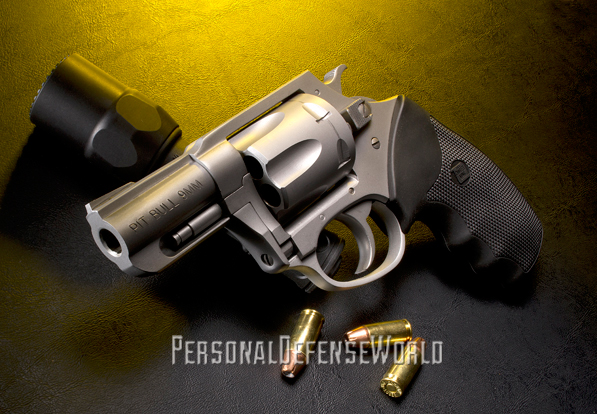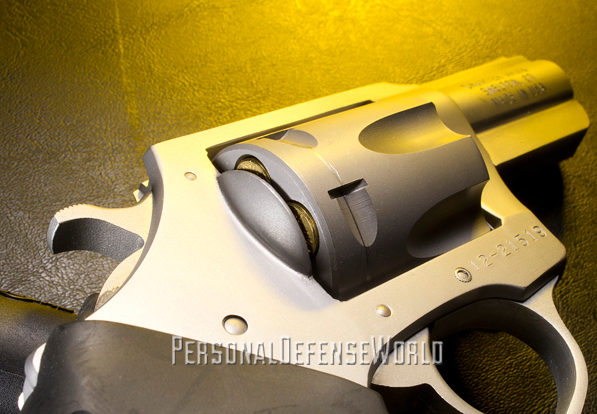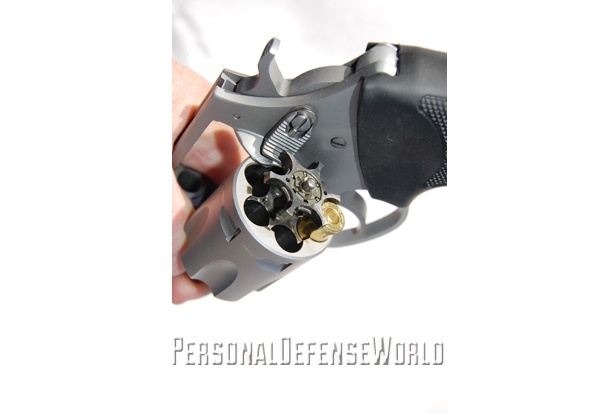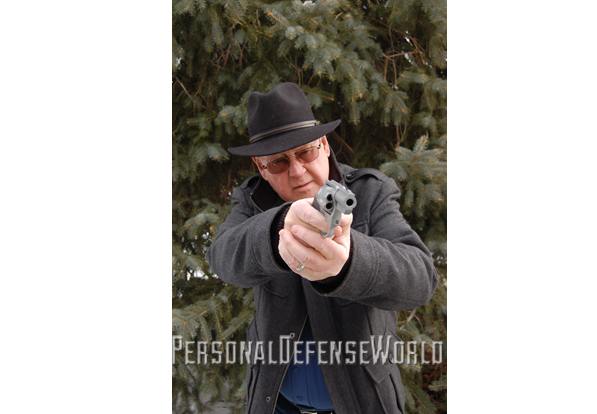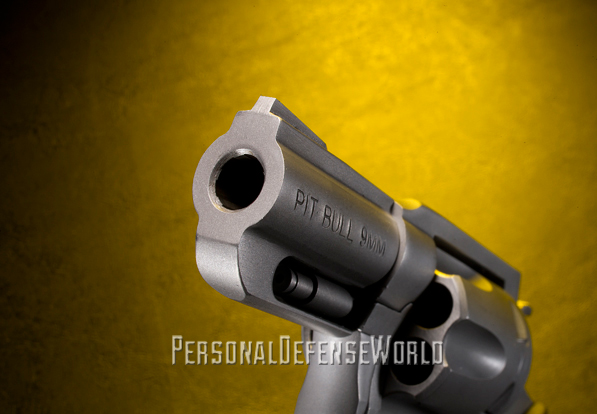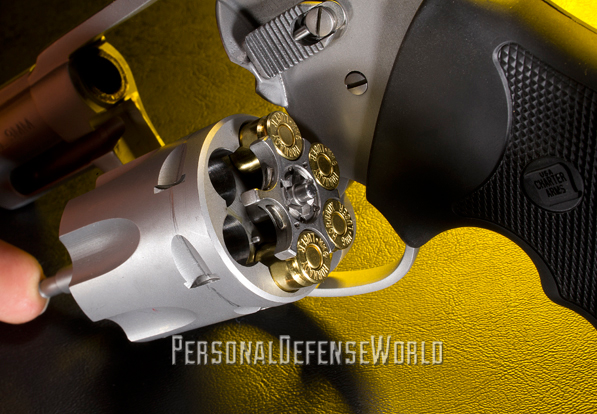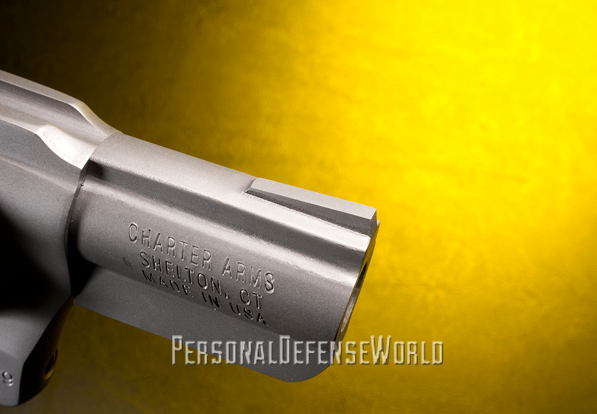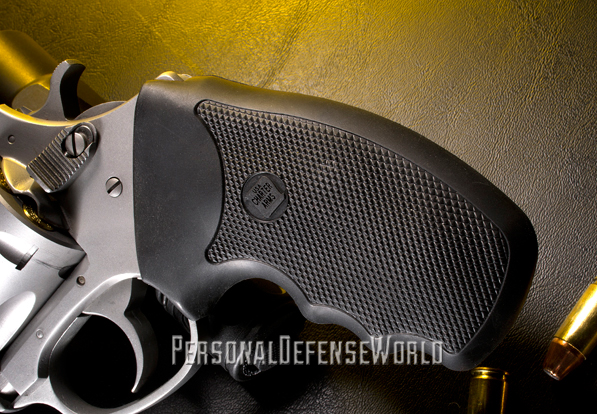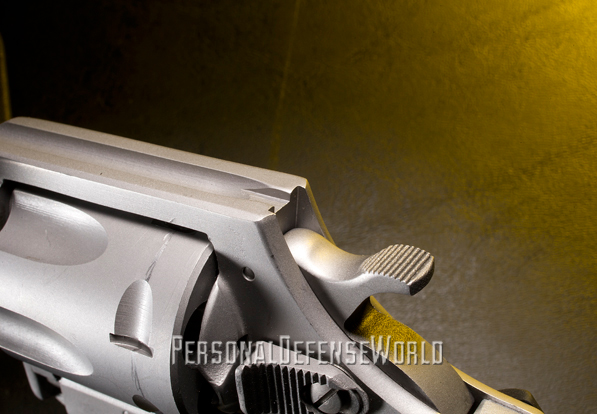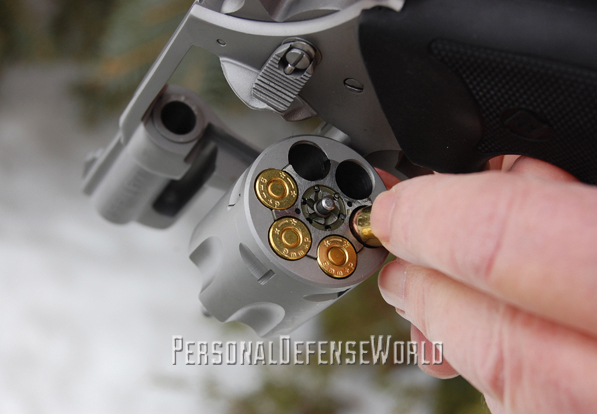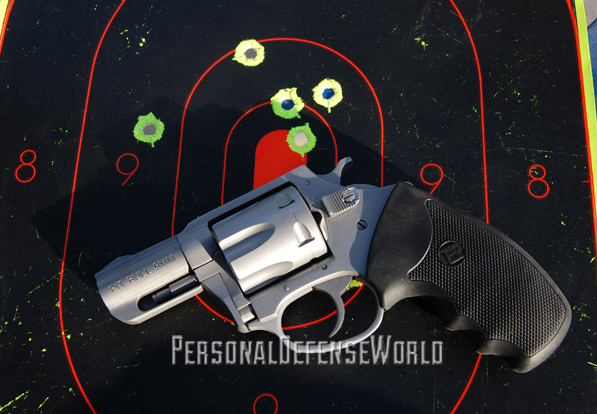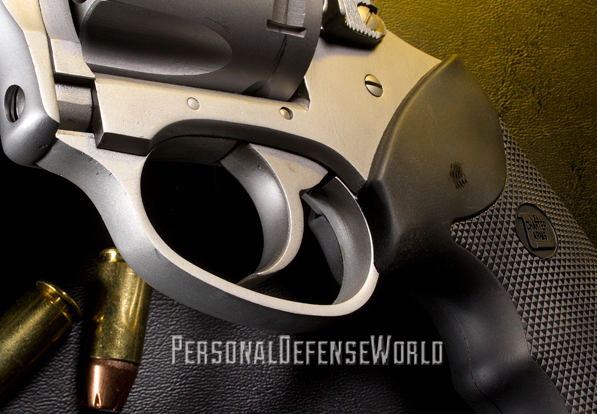Charter Arms Pitbull 9mm snub-nosed revolver won’t back down from a fight.
Revolvers chambering “rimless” rounds intended for autoloading pistols aren’t all that new. These cartridges include the .45 ACP, .40 S&W and 9mm Parabellum. World War II saw several servicemen carrying revolvers that digested the same .45 ACP ammunition 1911 pistols were chambered for—a battlefield expedient necessitated by dwindling supplies of Browning’s famed single-action autoloader.
Most revolver designers pull this trick off with half-moon (sometimes full-moon) clips that rest against the rear of the cylinder. This is an awkward solution that does the job but slows down the loading process. Charter Arms now offers a more elegant solution.
Advertisement — Continue Reading Below
Charter Arms recently began offering snub-nose revolvers specifically designed to digest high-velocity pistol ammunition. The .40 S&W Pitbull was the first Charter Arms revolver chambered for an autopistol round.
The reasoning behind this choice is easy to understand. The .40 S&W cartridge was specifically designed for U.S. law enforcement use, where it enjoys high popularity. A small .40 S&W revolver would provide an excellent backup weapon for someone who carried a heavier autoloading handgun chambering the same cartridge as his or her primary duty weapon. The ability to use the same ammunition in either handgun is obvious. That’s not the only advantage the new Charter Arms guns provide.
The .40 S&W is an excellent round for police work or self-defense. However, the considerably older 9mm Parabellum—which was adopted by the German Navy back in 1904—is more popular with civilian shooters. It’s also a long-established standard in European countries and many other places around the globe. It also happens to be the NATO cartridge U.S. forces adopted when the .45 ACP 1911 was retired by our military. As a point in fact, the 9mm Parabellum is the world’s best-selling pistol cartridge. It wouldn’t enjoy such a widespread reputation if it weren’t effective.
Advertisement — Continue Reading Below
Since it was a European cartridge, some U.S. shooters were not all that familiar with it. The 9mm gained cre-
dence in this country when it was chambered in Browning’s iconic Hi-Power pistol. This was once the handgun of choice among mercenaries and other professional soldiers.
The .38 Special has long been popular with those who have wanted a light-weight, concealable revolver. For many years, guns chambering this cartridge were issued to most police departments in this country. As a result, we’re all familiar with the round. We’re a nation of traditionalists, and the .38 Special is the cartridge that first comes to mind when we think “concealable revolvers.”
If you think the 9mm doesn’t measure up to the .38 Special’s performance, think again. Throwing bullets of ap-proximately the same weight, the 9mm churns up some 200 fps greater velocity than the .38 Special delivers. That’s true with both standard and +P loads. The 9mm is a decidedly serious defensive round that’s known for doing the job.
Advertisement — Continue Reading Below
Gun Details
Charter Arms’ 9mm Pitbull is made of matte stainless steel. For targeting, the revolver employs a low-riding front
blade mated with a groove along the topstrap that serves as a rear sight. Except for the hammer spur, there are no obstructions to hang up on a pocket and prevent a fast draw. The gun wears a hand-filling neoprene grip, complete with molded grooves to fit your fingers. The neoprene grip does a good job of dampening felt recoil and is a real aid to both shooter com-
fort and accuracy.
While this gun will probably be fired in double-action (DA) mode in any close-range confrontation, the hammer can also be manually cocked for the improved accuracy single-action (SA) shooting makes possible. It takes lots of practice to learn to shoot a DA revolver well. Those few police forces still armed with revolvers fire them in DA to prevent an accidental discharge in the heat of the moment. It requires more control and determination to use a revolver in DA mode. Once the hammer is manually cocked, it doesn’t take much pressure to trigger a round.
The ejector star is designed with a spring-loaded plunger over each chamber. The star snaps into the groove immediately forward of the cartridge case head and holds each round firmly in place until extracted by pushing on the ejector. When I say “firmly in place,” I really mean it! Once the cylinder is loaded with anywhere from one to six cartridges, you can point the muzzle skyward and no cartridges will fall out. Even shaking the gun in this position has no effect on cartridge retention. Please note that you can’t just throw the rounds into their chambers. Positive pressure is required to make sure each round is properly seated.
Advertisement — Continue Reading Below
Unlike most revolvers, the Pitbull doesn’t allow rounds to headspace on the rear of the cylinder. The lack of an extended cartridge base prevents this. Instead, the “rimless” 9mm rounds headspace near the front of each chamber, which provides a slight ridge for this purpose.
It takes a certain amount of force on the ejector rod to kick empties clear. This operation felt gritty at first, but
the ejector rod gradually smoothed out with use (and the judicious appli-cation of a drop of lubricating fluid). The trigger pull also improved with age and a tiny bit of lubrication.
One problem with this intriguing revolver is that it’s relatively slow to load. As already noted, cartridges can’t simply be inserted, but must be pressed downward until they lock into place in the spring-loaded ejector star. Unfortunately, no one currently manufactures a speedloader for this handgun. A speed strip can help, but I find loading cartridges individually into each chamber is the simplest approach.
Advertisement — Continue Reading Below
While +P loads can be safely fired in the 9mm Pitbull, the stubby 2.2-inch barrel limits its velocity, and thus, its effectiveness. Also, +P ammo generates noticeably more recoil. Firing +P loads doesn’t give you as much of an advantage as you’d think. It also adds considerably to wear and tear, and is more likely to produce flinching.
The action wasn’t as smooth as the Smith & Wesson revolvers I own, but it was still pretty good. The DA trigger exhibited a fair amount of stacking, but its pull weight was too heavy to be measured by my RCBS trigger scale. The SA trigger broke crisply under 5 pounds of pressure—a vast improvement over the heavy DA mode.
The action seemed a little rough during initial testing but gradually smoothed up. Accidental firing is made less likely by the hammer block safety, which prevents a discharge if the trigger isn’t manually pulled. As is typical with revolvers, no
other safety is available. And that’s one excellent example of the Pitbull’s simpli-fied point-and-shoot operation.
Advertisement — Continue Reading Below
Rounds Downrange
I brought four different types of ammo along when I took the Pitbull to the range. This included CorBon’s 90-grain jacketed-hollow-point (JHP) +P load, Black Hills 115-grain JHPs, Black Hills 124-grain JHP +P fodder, and Remington 124-grain Golden Saber brass-jacketed HP +P ammunition. All provided good accuracy when I fired the revolver off-hand at 15 yards. The best groups came with Black Hills’ 115-grain JHP ammo, which was not a + P load. Recoil was noticeably greater when +P loads were used, and this translated into larger groups.
Because I was more interested in the accuracy the Charter Arms revolver was capable of than in DA groups, I tested
the gun in SA mode. Maybe that’s not a fair test, but firing in DA mode would reflect my personal shooting skills more than the gun’s inherent accuracy. To confirm this, I fired some five-shot groups in DA, which produced considerably larger spreads. DA shooting is best confined to ranges of 10 yards or less (much less, if possible). If you’re going to engage an armed assailant at a much longer distance, it might pay to cock the hammer with your thumb before you shoot.
I found a lot to like in Charter Arms’ new 9mm Pitbull revolver. The gun is light enough to carry without complaint, even if you simply put it in your pocket. While the fixed sights are minimal, they’re easy to see. The bead-blasted finish reduces glare.
Advertisement — Continue Reading Below
If I decide to keep the gun rather than return it at the end of the consignment period, I’ll go shopping for a good, lightweight holster. While pocket carry has its attractions, a leather belt holster or inside-the-waistband (IWB) rig is usually more comfortable. For more information, visit charterfirearms.com or call 203-922-1652.
BUY NOW! AT www.personaldefenseworld.com/subscribe/handguns-buyers-guide/.
